This was printed in the Hooked on Carnival daily mail list August 26,2021 and reprinted with permission from Mitchell Stewart.
As we near the end of the month, I have to send in this matching Pair of Ambered Duncan MARDI GRAS Vases. Yes, the vases are Clear Glass that were placed in the mineral springs water for a period of time, thus the Amber color and the light Iridescence. We call them Ambered Glass.
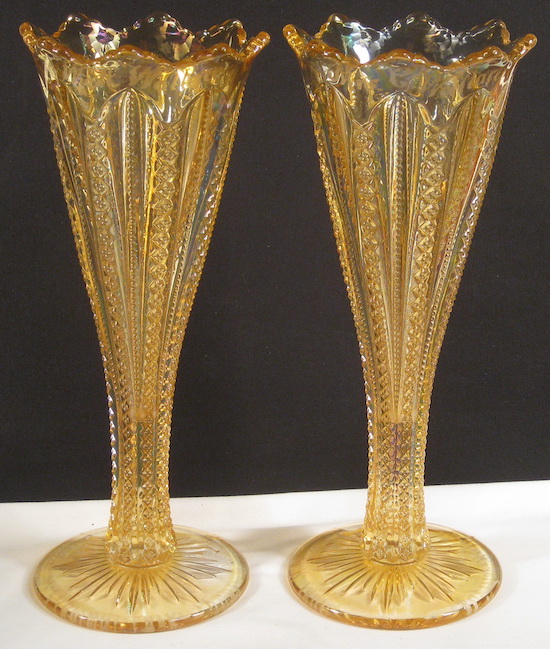
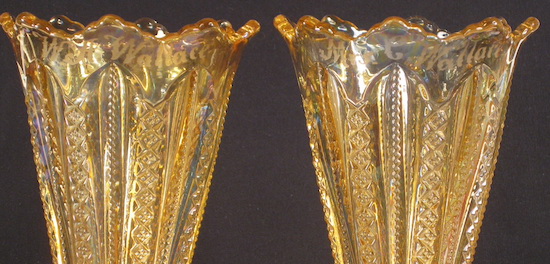
I am sure this is new info to many HOC readers. Here is a brief description of the process…“The process consisted of glassware arranged on shelves under a pipe with small holes where water from the artesian well continually flowed evenly over them. Every two days the glass was washed and polished with soapy water and returned to the shelves. Glassware is ambered on both sides and takes six to eight weeks to complete. Less time the lighter the amber and longer time the darker the amber.”
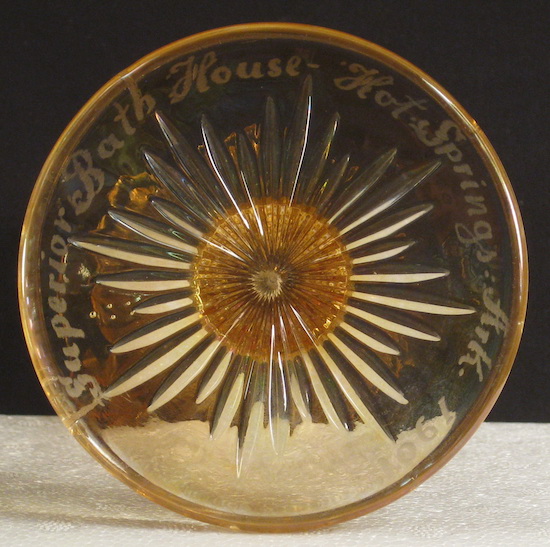
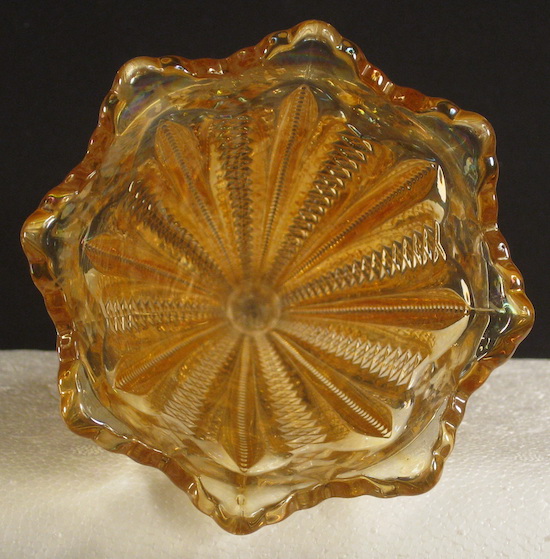
FYI, I actually sold one…then later decided that they had been together since 1901, they should stay together…so the other one went to the same person. I am happy to say that they are still together. Who knows, maybe one day they may return to me.
***********************
Duncan & Miller Mardi Gras Vase
by Mitchell Stewart
“Whadda ya mean, “It’s not Carnival…”” Yes, that is what I heard when I was asked about a couple of vases that were in the recent Tom Burns, Tampa Bay Carnival Glass Club Convention Auction.
My response was that Carnival Glass as we know it began circa 1907 with Fenton; these are dated 1901. The item was a pair of amber-looking trumpet vases with a scalloped rim and a circle foot. If you picked them up and looked, you could see that the color was lightly iridized with the amber, as well as the clear glass near the top and the foot
To summarize a few articles and notes I have, glass can be lightly iridized and/or ambered by placing the item in the water of certain types of mineral springs. You can read more about this on Glen and Stephen Thistlewood’s website, Carnival Glass Worldwide. Therefore, with Glen’s permission, here is the link to the entire article http:// www.carnivalglassworldwide.com/marlin-water- ambered-glass.html .
Duncan & Miller Glass Company made the vase. It is one of the many items in their Line #42. This line is circa 1894 per Mike Carwile and continued to approximately 1920. The line is called Duncan’s Empire and is also known as Mardi Gras, Paneled English Hobnail with Prisms, and Siamese Necklace. The vase is usually ID’d as Mardi Gras and appears to have been made in three different sizes, six and a half-inch, eight-inch and ten-inch.
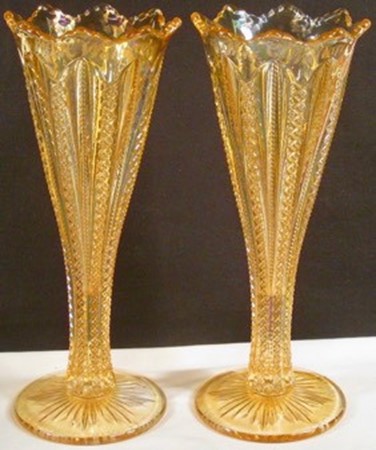
This pair of Mardi Gras vases are the larger size and have Superior Bath House, Hot Springs, Ark ,1901 scribed on the bottom of each foot and Mrs. C. Wallace on the top of one and W. C. Wallace on the top of the other. Both of the vases are ten and an eighth inches in height, four and a quarter inches across the top and each has a four-inch diameter base.
A special souvenir of a man and his wife’s visit to Hot Springs, Arkansas in 1901.
References:
- Standard Encyclopedia of Pressed Glass, 6th Edition by Mike Carwile.
- Corning Glass Museum, Rakow Research Library, Stephens Water Ambered Glass by Clarence Stephens.
- CarnivalGlassWorldwide.com .
- Early American Pattern Glass, 1850–1910 by Bill Jenks & Jerry Luna.
Photos courtesy of Mitchell Stewart
This article first appeared in the ICGA Pump in the June 2017 issue and is reprinted with permission.
